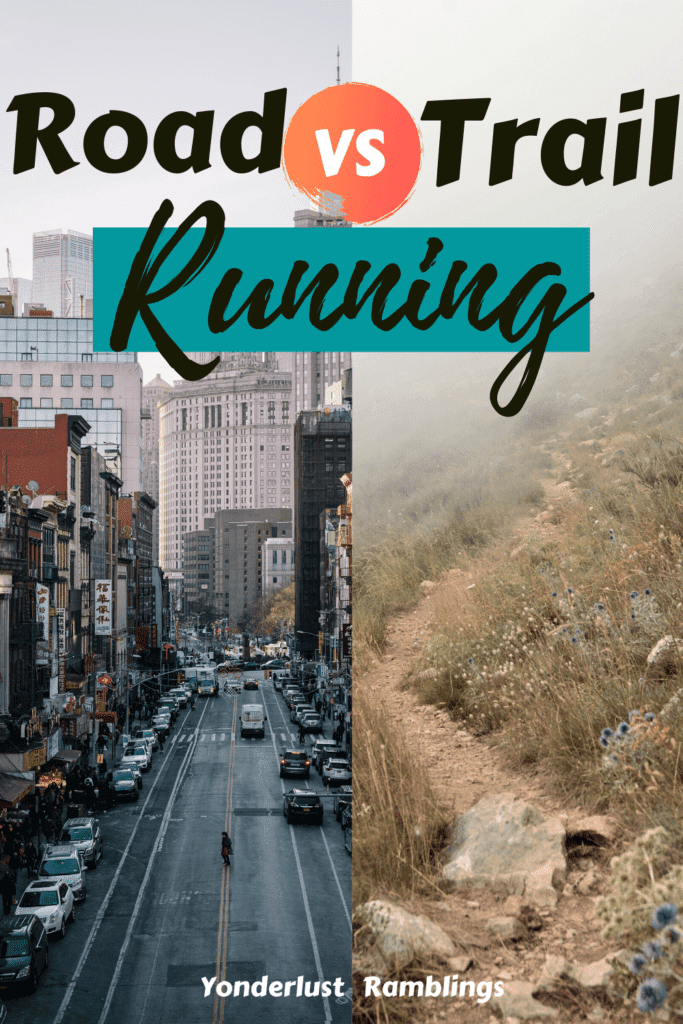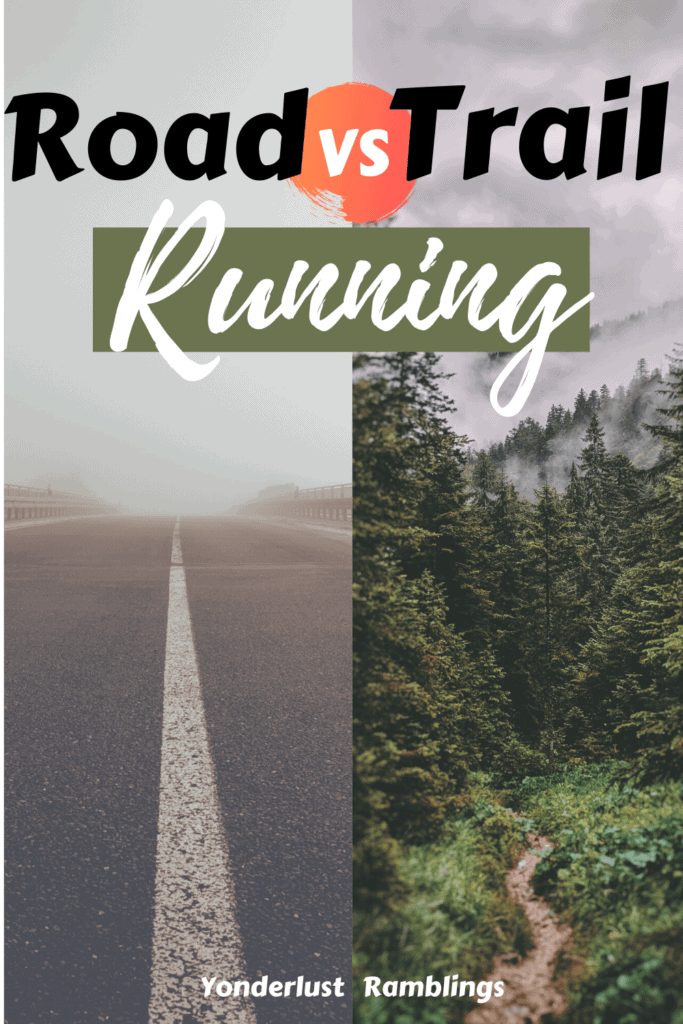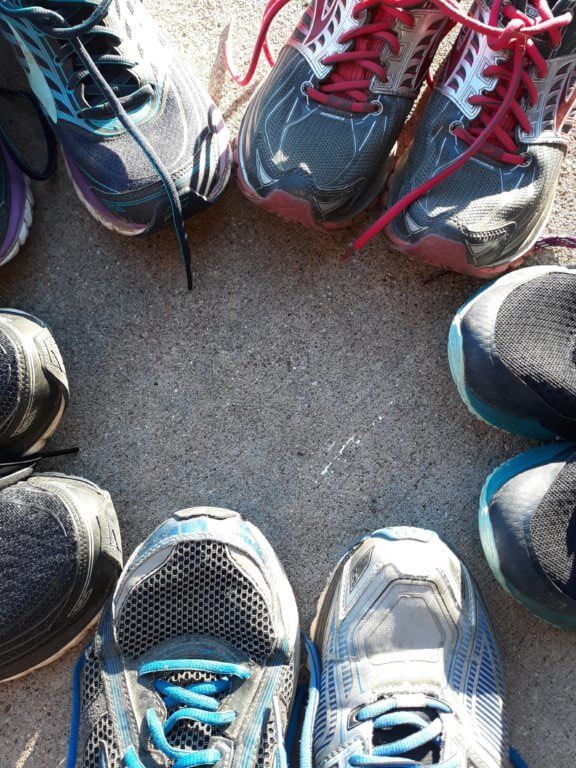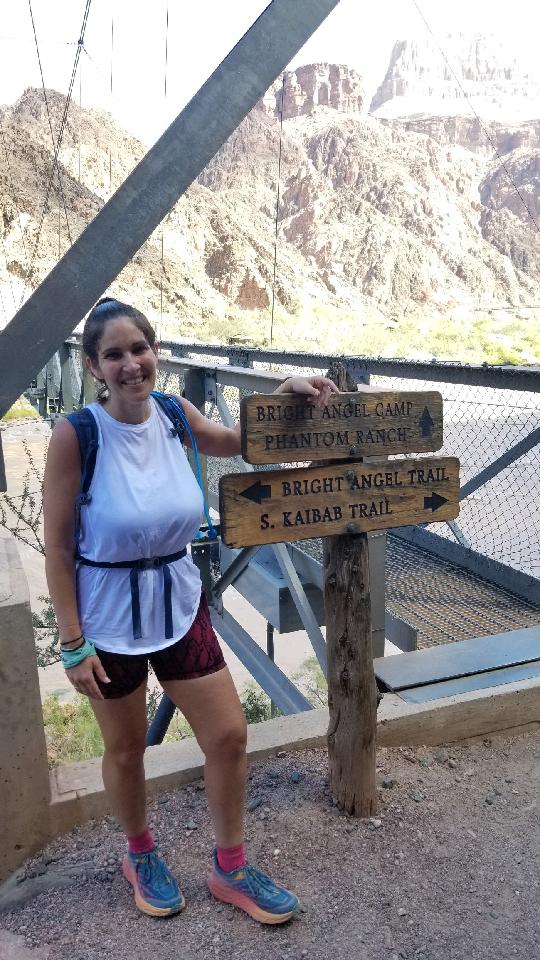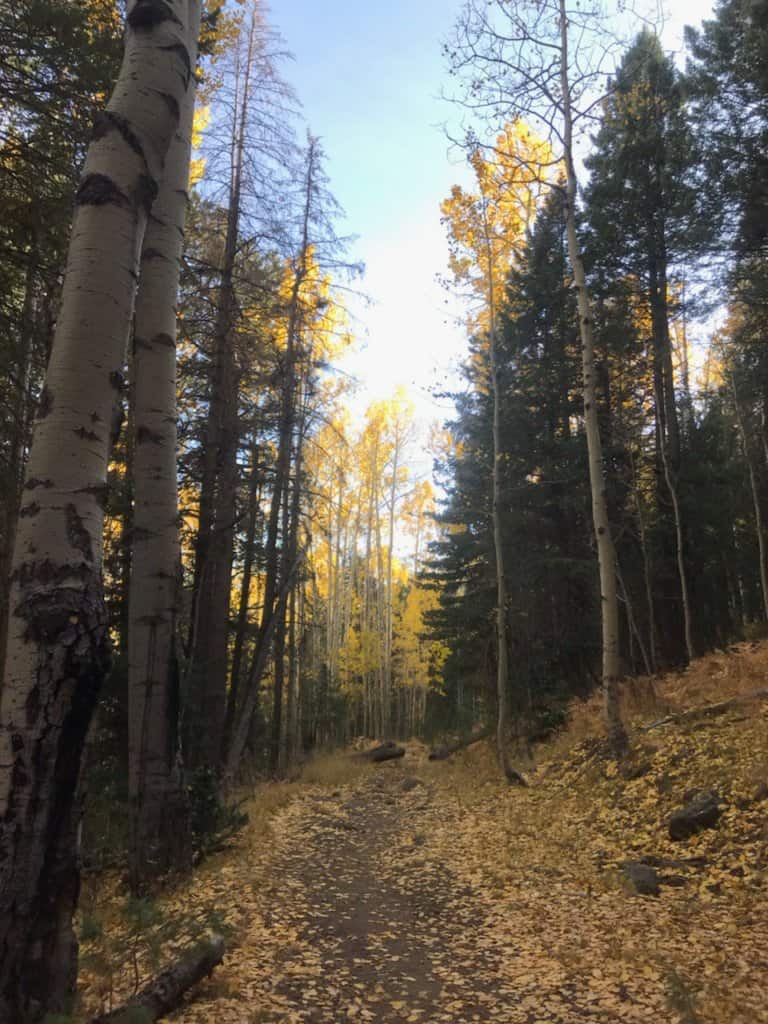Road Running vs Trail Running
Whether you are just starting out with running, or you are a seasoned runner, you may find yourself contemplating the differences between road running vs trail running, and which best fits you. Maybe you started in road running, and are looking to venture into trail running, or vice versa? Maybe you are looking to embed some variety into your running routine, or maybe you are just looking to increase your knowledge of different forms of running. What not everyone may know, is that the worlds of road running and trail running are equally bountiful, and no matter whether you are called to one, or both, numerous opportunities and benefits abound in both road running and trail running.
Disclosure: Below are some affiliate links-these are all products I highly recommend. I won’t make any recommendations on this page that I haven’t tested or personally used! Enjoy this guide to road running vs trail running!
Road Running vs Trail Running
So what exactly defines road running vs trail running?
Road running occurs on what I’ll refer to as man-made surfaces. Road running takes place on established and maintained roads, sidewalks, bridges, and other man made vessels of transportation. That means aside from the occasional pothole, road running should entail traversing an even and mostly smooth, consistent, surface. Obviously, road running may prevail in large cities and urban areas, though it is possible to find places to trail run within cities.
Trail running happens on trails and paths, which means that trail runners run on natural surfaces comprised of dirt, rocks, gravel, leaves, sand, ice, and tree roots. Surfaces are often uneven and diverse, due to the naturalness of the running surface. Trail running routes often contour to the environment they are found in, climbing up mountainsides, paralleling rivers, winding through narrow gorges, and meandering through forests and grasslands.
Road Running Versus Trail Running: Which is Best for You?
The best way to determine whether you are primarily a road runner or a trail runner (or perhaps both), is to create a simple PRO’s and CON’s list of road running vs trail running.
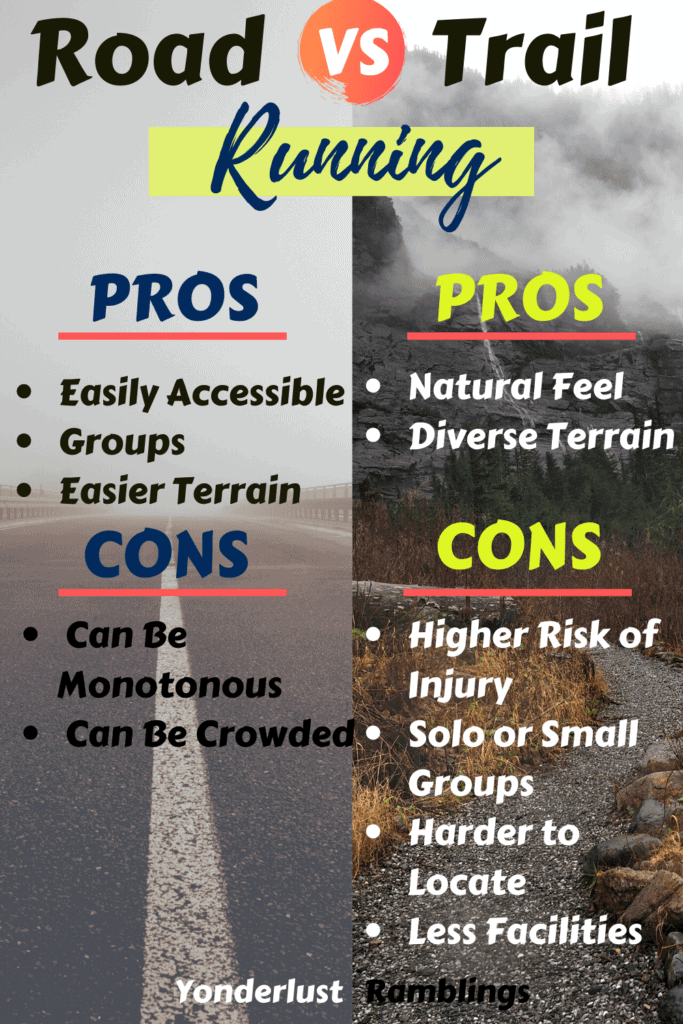
Pros of Road Running:
- easily accessible to large populations – When it comes to the places in the world with the most congregated people, you are going to find easier and more accessibility to roads and thus road running. City and neighborhood sidewalks, paved walking and running paths in cities, and a plethora of other available maintained roads generally speaking. A lot of people interested in running have immediate access to road running just by stepping outside their front door.
- often easier for group road running – if you are trying to get a group of people together to go run, or looking for ways to join a running group, you may find that it is easier to meet up within a respective city and find a nice established path at which to convene at with road running vs trail running. Trail running may entail having to travel further to find an ideal natural running trail.
- easier to “navigate” – road running is comparatively less challenging, in terms of dealing with navigating terrain. Road runners will not encounter a hidden root or jagged rock protruding from the path. They will not have to navigate the challenges of uphills and downhills with these additional terrain challenges thrown in. In road running, you will have uphills and downhills, but they should be free of these additional cautions.
Cons of Road Running:
- can become monotonous – if you are not careful, you may find that road running can become monotonous. It is easy to plod along, without feeling a connection to what you are doing, due to the relative ease of the environment. Not to say that road running is easy, but it is easier to disengage because your feet can be largely trusted to do their work on auto – pilot. If you partake in road running, it is important to find ways to prevent monotony, boredom, burnout, or too much reliance on auto pilot. This might involve varying your route, or running in new places.
- can become crowded – literally, with other people, cars, etc., and figuratively, with the noises of traffic, lawn mowers, honking, etc.
Pros of Trail Running:
- more natural feel – trail running has a way of connecting you to the world you are running on, because it literally demands your active engagement and attention. If you are trail running a mountainside full of scree, you cannot run on auto – pilot. Every one of your senses need to be engaged for that run to avoid mis-steps or possible rolled ankles. Trail running is also typically more “removed” from civilization for those runners who appreciate solitude. That’s not to say trail running doesn’t exist in cities, but it has a different feel to it than running down a street alongside cars and other pedestrians.
- more diversity in the terrain itself – trail running can be filled with a myriad of different terrains, and trail running will immerse you and your body in responding to navigating those muddy, rocky, rooty, icy, and sandy trails!
Cons of Trail Running:
- somewhat higher risk of injury – there are different elements to contend with during trail running. Due to the uneven and natural surfaces that are run on, there is a higher risk for an ankle roll or a sprain due to landing wrong or mis-handling a natural element thrown at you. That is why trail running demands uninterrupted attention.
- less conducive to larger running groups – that’s not to say you have to run alone in trail running, but it will be harder to manage a large running group with trail running. Trails are often narrower, and there is a danger in trying to crowd too many runners together on a trail that demands full engagement. Trail running is more suited towards individuals or smaller groups of 2 or 3.
- can be harder to get to – depending on where you live, it may be harder to locate a good trail to trail run on. Especially if you are in a large city, you may find yourself limited to 1 or 2 trail running options at most. A lot of trail running and organized trail running events occur in state parks and National Parks, and outside of immediate large city boundaries.
- less facilities – when I run in my neighborhood, often I can plan my routes out to pass public facilities like water fountains or bathrooms, if I need them. You are unlikely to pass as many facilities on a trail run, so trail running involves a little more planning ahead in that respect.
So What Gear Do I Need for Road Running and Trail Running?
Regardless of whether you feel called to road running, or drawn to trail running, or a desire to combine the two, there are a few key pieces of vital running gear you will need to invest in. And with so much riding on your feet, it is wise to invest well.
Road Running and Trail Running Shoes
Road Running Shoes: a good road running shoe effortlessly and seamlessly combines stability with cushion, without weighing you down or feeling clunky. This shoe perfectly perfects this balancing act, and it’s a name in the running world that countless road runners rely on, including myself.
Trail Running Shoes: a solid trail running shoe takes all of the factors of a road running shoe, stability, cushion, and weight, and combines that with an extra dose of responsiveness. A trail running shoe has to be able to respond to whatever natural elements are thrown at it, and grip and hold onto those elements reliably to safely propel you forward.
Road Running and Trail Running Clothing
In addition to the all important running shoe, there are several other key items of running clothing that will not only improve your performance, but up your comfort level as well.
Running Socks: you’re gonna wanna go with wool, trust me! Wool is my go to fabric for running, including for socks. There’s one brand out there that has built a indisputable name for themselves in the world of wool performance socks.
Running Top: When it comes to running, I live in this wool tank! Wool is breathable, moisture wicking, quick drying, and odor resistant. All of those factors combined make for a superbly comfortable running experience.
Ready to Start Training?
If you are now feeling revved up to pursue road running, trail running, or both, than you are ready to take on the ultimate challenge – a marathon or half marathon race! Whether you are running on pavement, gravel, dirt, sand, or some combination in between, participating in an organized, long distance, running event is one of the best lifestyle decisions you’ll ever make!
Not only will committing to, training for, and conquering a goal such as this leave a lasting (and addictive) impression, but organized races and “runcations” are one of the best ways to experience the world and see new destinations!
In order to get started, you’ll need the right blueprint! Grab one of my FREE training guides below, with straightforward, realistic, and detailed training calendars!
PIN for LATER!


